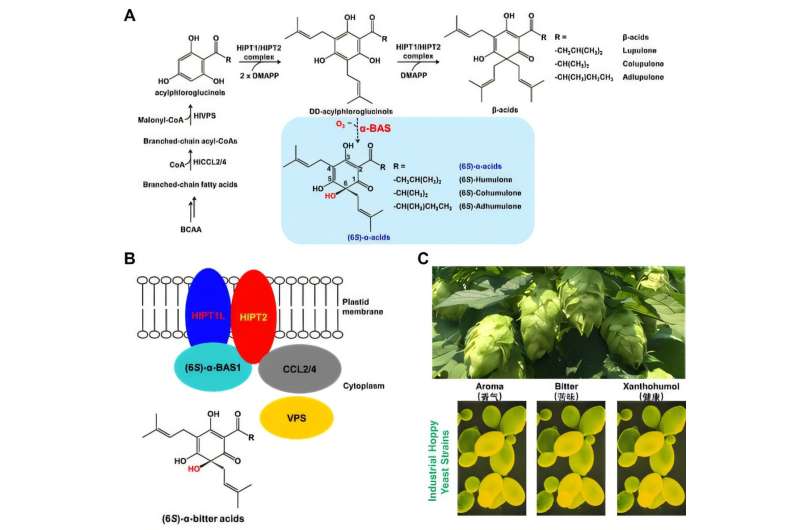Hops, a vital ingredient in beer production, have revealed new insights into their unique flavor profile thanks to a breakthrough by a research team from the Chinese Academy of Sciences. The team, led by Prof. Wang Guodong, identified the enzyme responsible for the biosynthesis of α-bitter acids, which impart the characteristic bitterness that defines beer.
Hops contain female flowers rich in glandular trichomes that synthesize essential metabolites influencing beer’s flavor and quality. Among these, terpenes contribute to the aroma, while xanthohumol offers health benefits due to its antioxidant properties. The significance of α-bitter acids extends beyond flavor; historically, they served as natural preservatives, enhancing beer’s shelf life before modern brewing techniques were developed.
Despite understanding the upstream biosynthetic pathway of α-bitter acids for years, the final enzyme involved, α-bitter acid synthase (α-BAS), had eluded verification until now. The challenge stemmed from the spontaneous oxidation of deoxy-α-bitter acid, its precursor, which produces a racemic mixture of chiral compounds, complicating the identification of the enzyme’s function.
To address this issue, the researchers developed a highly sensitive liquid chromatography–mass spectrometry (LC–MS) detection method. Their findings, published in Plant Communications on November 5, 2025, indicate that hop glandular trichomes predominantly accumulate the 6S-type α-bitter acid.
Through rigorous testing of over ten candidate genes within a yeast heterologous expression system, the team identified the enzyme HlMO18 as the specific catalyst for converting deoxy-α-bitter acid into the 6S form. The study also revealed critical amino acid residues essential for the enzyme’s activity, providing further insights into its functionality.
In addition to confirming the role of HlMO18, the team discovered that 6S-type α-bitter acid synthase forms a metabolic complex with upstream enzymes. This relationship explains why only the 6S form accumulates in the glandular trichomes of hops.
This research completes the biosynthetic map of α-bitter acids in hops and enhances understanding of the major flavor compounds in this crucial crop. Looking ahead, the team plans to leverage synthetic biology to engineer industrial yeast strains capable of producing “hoppy beer.” This innovative approach aims to create beers with authentic hop flavors without the need for actual hop plants, potentially lowering production costs and allowing for more customized, flavor-rich beer offerings.
These advancements not only deepen the understanding of hop chemistry but also pave the way for new innovations in the brewing industry, aligning with a growing trend towards sustainability and flavor customization. The research highlights the intricate relationship between hops and beer, reaffirming their importance in both culinary and economic contexts.







